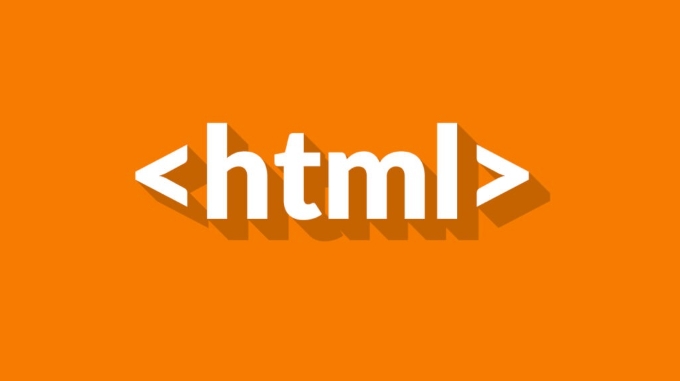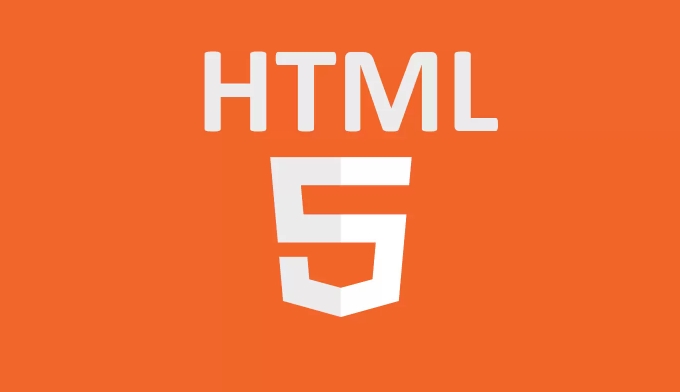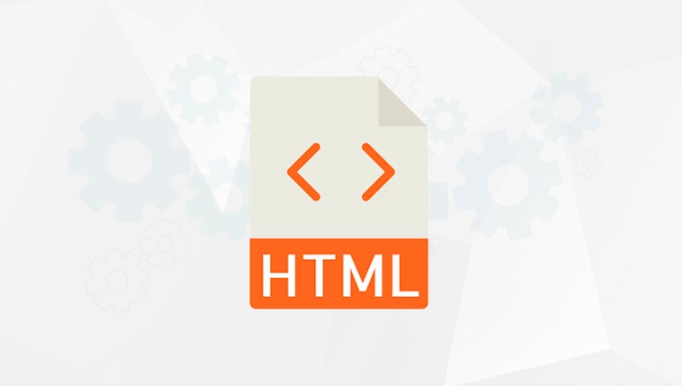The data attribute is a feature in HTML5 for storing custom data, allowing information to be attached to HTML elements by attribute names starting with data-, which facilitates JavaScript operations. Its main uses include: 1. Identify the state of the element, such as marking whether the button is activated with data-active, and reading the value through dataset to execute logic; 2. Carry data when interacting with the backend, such as using data-item-id to save the unique ID of the list item, so that details can be obtained when clicking; 3. Control component behavior, such as using data-modal-delay and data-animation to configure modal box parameters to improve flexibility. When using it, you should pay attention to: avoid storing sensitive or large amounts of data, which affects performance; it is recommended to add short horizontal lines to the naming letters; priority is given to the dataset API for operation.

In web development, the processing of dynamic content often requires front-end data transfer, status recording or client script operations. HTML's data attributes provide a simple and effective way to store custom data, allowing developers to attach information to HTML elements for JavaScript to use.

What is a data attribute?
The data attribute is a standard way introduced in HTML5, allowing you to add attribute names starting with data- to save custom data in HTML tags. for example:
<div data-user-id="123" data-role="admin"></div>
These properties do not affect page rendering, nor are they exposed to styles or layouts, and are ideal for carrying some lightweight data to JavaScript.

How to use data properties in a project
Used to identify element states
Sometimes we need to switch the state of certain elements according to user behavior, such as whether a button is activated. You can mark it like this:
<button data-active="true">Click me</button>
JavaScript can determine the next step by reading this value:

const btn = document.querySelector('button');
if (btn.dataset.active === 'true') {
// Execute logic in activated state}Carry data when interacting with the backend
For example, for a list item returned from the server, each entry has a unique ID or other meta information, and you can directly write it to the DOM using the data attribute:
<li data-item-id="456">Product name</li>
When a user clicks on an entry, JS can quickly obtain the ID to request details without additional querying the interface or global variable maintenance status.
Control component behavior
Some front-end components may rely on some configuration parameters, such as the time of the modal box display, the animation type, etc. It can be configured through the data attribute:
<div data-modal-delay="500" data-animation="fade-in"></div>
Then JS reads these values for corresponding processing. This method is more flexible than hard-coded into a script and is also convenient for non-programmers to modify.
Notes and best practices
- Don't store sensitive data : because the data attribute is written in HTML plain text, which can be seen by anyone in the browser review element.
- Avoid large amount of data : Although it can store strings, it is not suitable to place a large amount of text or complex data, otherwise it will affect the page loading performance.
- Naming specification recommendations : Use lowercase letters and short horizontal lines to connect naming, such as
data-product-category, to keep it clear and easy to read. - Priority is given to dataset API operations : rather than use getAttribute/setAttribute, which is more concise and less prone to errors.
Ending
The data attribute is a very practical gadget that can simplify code logic in many scenarios. It is not complicated, but if used properly, it can make front-end interaction more natural and smooth. Basically, these common practices are used, the key is to use them in the right places.
The above is the detailed content of HTML Data Attributes for Dynamic Content. For more information, please follow other related articles on the PHP Chinese website!

Hot AI Tools

Undress AI Tool
Undress images for free

Undresser.AI Undress
AI-powered app for creating realistic nude photos

AI Clothes Remover
Online AI tool for removing clothes from photos.

Clothoff.io
AI clothes remover

Video Face Swap
Swap faces in any video effortlessly with our completely free AI face swap tool!

Hot Article

Hot Tools

Notepad++7.3.1
Easy-to-use and free code editor

SublimeText3 Chinese version
Chinese version, very easy to use

Zend Studio 13.0.1
Powerful PHP integrated development environment

Dreamweaver CS6
Visual web development tools

SublimeText3 Mac version
God-level code editing software (SublimeText3)
 Applying Semantic Structure with article, section, and aside in HTML
Jul 05, 2025 am 02:03 AM
Applying Semantic Structure with article, section, and aside in HTML
Jul 05, 2025 am 02:03 AM
The rational use of semantic tags in HTML can improve page structure clarity, accessibility and SEO effects. 1. Used for independent content blocks, such as blog posts or comments, it must be self-contained; 2. Used for classification related content, usually including titles, and is suitable for different modules of the page; 3. Used for auxiliary information related to the main content but not core, such as sidebar recommendations or author profiles. In actual development, labels should be combined and other, avoid excessive nesting, keep the structure simple, and verify the rationality of the structure through developer tools.
 Implementing Clickable Buttons Using the HTML button Element
Jul 07, 2025 am 02:31 AM
Implementing Clickable Buttons Using the HTML button Element
Jul 07, 2025 am 02:31 AM
To use HTML button elements to achieve clickable buttons, you must first master its basic usage and common precautions. 1. Create buttons with tags and define behaviors through type attributes (such as button, submit, reset), which is submitted by default; 2. Add interactive functions through JavaScript, which can be written inline or bind event listeners through ID to improve maintenance; 3. Use CSS to customize styles, including background color, border, rounded corners and hover/active status effects to enhance user experience; 4. Pay attention to common problems: make sure that the disabled attribute is not enabled, JS events are correctly bound, layout occlusion, and use the help of developer tools to troubleshoot exceptions. Master this
 Configuring Document Metadata Within the HTML head Element
Jul 09, 2025 am 02:30 AM
Configuring Document Metadata Within the HTML head Element
Jul 09, 2025 am 02:30 AM
Metadata in HTMLhead is crucial for SEO, social sharing, and browser behavior. 1. Set the page title and description, use and keep it concise and unique; 2. Add OpenGraph and Twitter card information to optimize social sharing effects, pay attention to the image size and use debugging tools to test; 3. Define the character set and viewport settings to ensure multi-language support is adapted to the mobile terminal; 4. Optional tags such as author copyright, robots control and canonical prevent duplicate content should also be configured reasonably.
 Best HTML tutorial for beginners in 2025
Jul 08, 2025 am 12:25 AM
Best HTML tutorial for beginners in 2025
Jul 08, 2025 am 12:25 AM
TolearnHTMLin2025,chooseatutorialthatbalanceshands-onpracticewithmodernstandardsandintegratesCSSandJavaScriptbasics.1.Prioritizehands-onlearningwithstep-by-stepprojectslikebuildingapersonalprofileorbloglayout.2.EnsureitcoversmodernHTMLelementssuchas,
 HTML for email templates tutorial
Jul 10, 2025 pm 02:01 PM
HTML for email templates tutorial
Jul 10, 2025 pm 02:01 PM
How to make HTML mail templates with good compatibility? First, you need to build a structure with tables to avoid using div flex or grid layout; secondly, all styles must be inlined and cannot rely on external CSS; then the picture should be added with alt description and use a public URL, and the buttons should be simulated with a table or td with background color; finally, you must test and adjust the details on multiple clients.
 How to associate captions with images or media using the html figure and figcaption elements?
Jul 07, 2025 am 02:30 AM
How to associate captions with images or media using the html figure and figcaption elements?
Jul 07, 2025 am 02:30 AM
Using HTML sums allows for intuitive and semantic clarity to add caption text to images or media. 1. Used to wrap independent media content, such as pictures, videos or code blocks; 2. It is placed as its explanatory text, and can be located above or below the media; 3. They not only improve the clarity of the page structure, but also enhance accessibility and SEO effect; 4. When using it, you should pay attention to avoid abuse, and apply to content that needs to be emphasized and accompanied by description, rather than ordinary decorative pictures; 5. The alt attribute that cannot be ignored, which is different from figcaption; 6. The figcaption is flexible and can be placed at the top or bottom of the figure as needed. Using these two tags correctly helps to build semantic and easy to understand web content.
 What are the most commonly used global attributes in html?
Jul 10, 2025 am 10:58 AM
What are the most commonly used global attributes in html?
Jul 10, 2025 am 10:58 AM
class, id, style, data-, and title are the most commonly used global attributes in HTML. class is used to specify one or more class names to facilitate style setting and JavaScript operations; id provides unique identifiers for elements, suitable for anchor jumps and JavaScript control; style allows for inline styles to be added, suitable for temporary debugging but not recommended for large-scale use; data-properties are used to store custom data, which is convenient for front-end and back-end interaction; title is used to add mouseover prompts, but its style and behavior are limited by the browser. Reasonable selection of these attributes can improve development efficiency and user experience.
 How to handle forms submission in HTML without a server?
Jul 09, 2025 am 01:14 AM
How to handle forms submission in HTML without a server?
Jul 09, 2025 am 01:14 AM
When there is no backend server, HTML form submission can still be processed through front-end technology or third-party services. Specific methods include: 1. Use JavaScript to intercept form submissions to achieve input verification and user feedback, but the data will not be persisted; 2. Use third-party serverless form services such as Formspree to collect data and provide email notification and redirection functions; 3. Use localStorage to store temporary client data, which is suitable for saving user preferences or managing single-page application status, but is not suitable for long-term storage of sensitive information.






